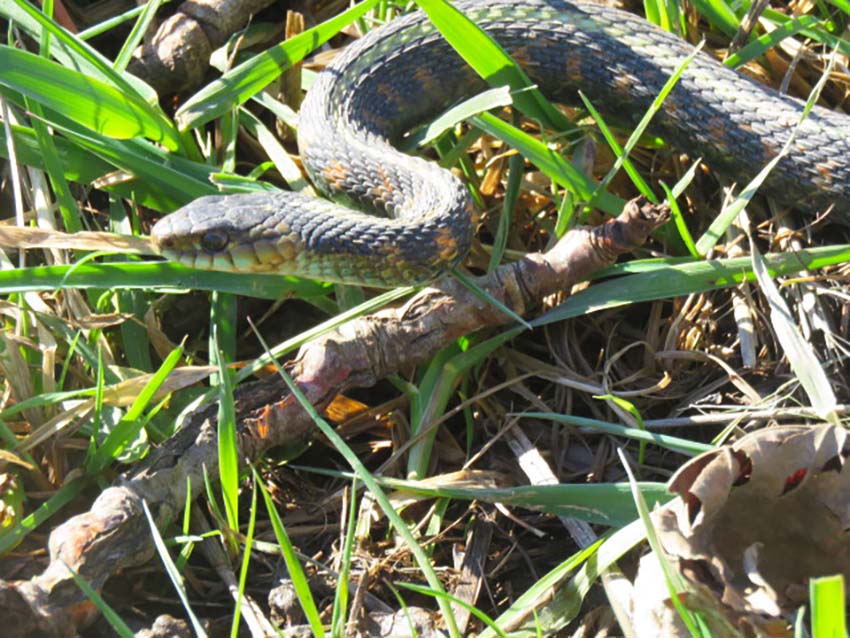
26 Feb Ground Hog’s Day doesn’t apply here & other Late-Winter thrills & chills
Posted from Seattle, WA on February 26, 2023
Ground Hog’s Day is for Pennsylvania, (where I’m from). It doesn’t apply here in Washington state.
Delia and I found this fairly large and very pretty Western Garter Snake out and about in Ridgefield, WA on Friday, the 24th of February, and were surpised to see one so soon and for that matter right after a record cold spell in nearby Portland, OR and with snow still on the ground in the area. To be quite honest, we have no idea exactly when it is normal to expect to see Garter Snakes in Clark County.
But whether you believe in Ground Hog’s Day in Pennsylvania or my newly-proposed Garter Snake Day in Western Washington–(Garter Snakes mostly don’t cast a lot of shadow)–I have the same prediction for you. Washington now has a Flood-and-mudslide season followed by a Smoke-and-drought season and I’m not sure when the latter will get underway but count on it.

We were surprised by the latitudinal striping on this snake, we are used to bold longitudinal striping on Garter Snakes.

Seattle still harbors the third largest Woodpecker in the world. The Pileated unfortunately used to be 5th or further down that list but two spectacular birds have been driven extinct in recent times, the Imperial Woodpecker of Mexico and the Ivory-billed Woodpecker of Southeastern United States. In Seattle they seem to be a bird restricted to the remnant forest where the big timber hangs on. Delia and I have seen them in Deadhorse Canyon, where this female was working at close quarters with her mate in February, plus Seward, Discovery, Lincoln, and Carkeek Parks as well as Cheasty. But in 35 years of living on Beacon Hill the Pileated Woodpecker has never made our “yard-list” and we have never seen one in the residential zone anywhere on the hill here.

Overheard on Graveyard Spit: “Care to joust?”
It was after a rude Ring-billed Gull decided to mix it up a little bit with a napping Long-billed Curlew this Tuesday. It helped us make sure of the species identification, as Whimbrels have a shorter bill. Graveyard Spit is in Tokeland, Washington.
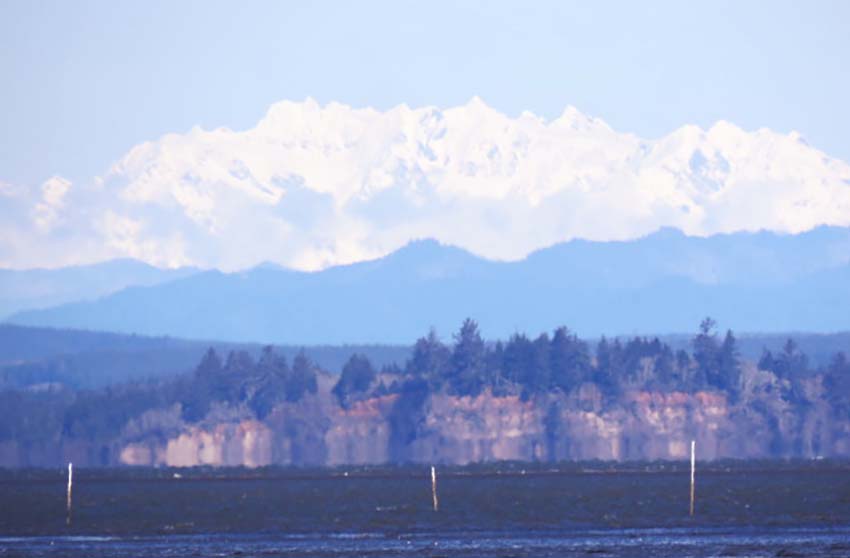
That same day we were in Westport looking at a rare Loon, next shot. At Bottle Beach I took this photo across Gray’s Harbor looking to Mt. Olympus. The photo of course is technically poor but it surprises me and everyone I show it to, (That means Delia). Mt Olympus is an unusual-looking mountain from the South, and we did not realize that there were such tall cliffs on the North-shore of Gray’s Harbor. Someone should take a better shot of this with the right camera (I have a Powershot, a low-resoution bird camera). It looks like something from a far-off land.
more soon

This is the Yellow-billed Loon that has been exciting people all winter by more or less hanging out in the Westport Marina. The day we saw it there was a high-wind warning on the coast and the bird sought the safety of the Marina all day. (See those big waves? That was inside the Marina breakwater.) It has a very large bill, yellowish in winter and even yellower in the summer and it is the largest Loon in the world. In breeding plumage it looks generally like a Common Loon except for these differences. Yellow-billed Loons are a northerly species and are not abundant at all. One of their favored wintering grounds is around Protection Island between Sequim and Port Townsend where few people see them.

Speaking of Port Townsend, this is a view of the town from the Keystone Ferry, 2 17 23. Delia and I went out there to look for Alcids–Puffin-related Seabirds and other Seabirds. We dipped on Ancient Murrelets but found about 14 Marbled Murrelets as well as Murres, Rhinocerous Auklet, and Pigeon Guillemots. We found the exotic looking White-winged Scoter at Port Gamble as well as the dashing Long-tailed Duck, which is a serious deep-diver.
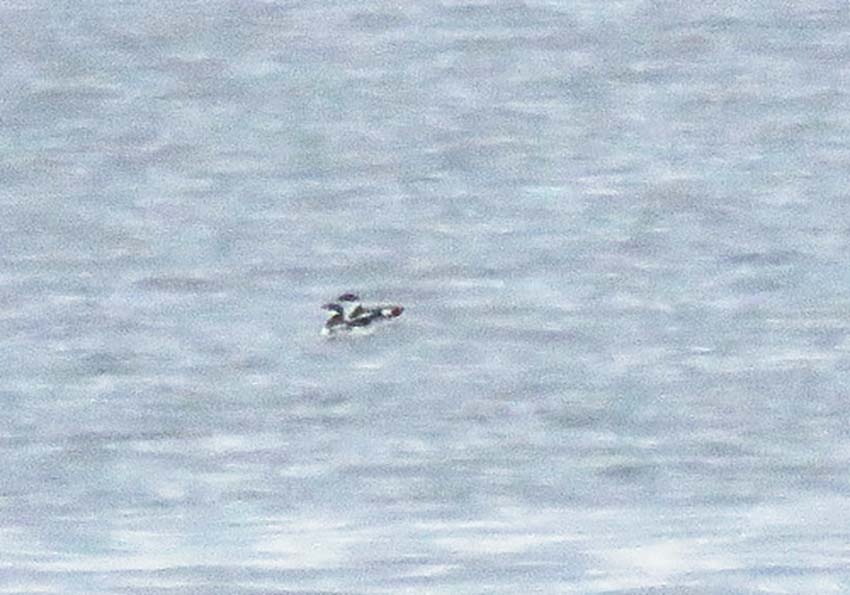
One clue you are looking at Marbled Murrelets is that there are almost always two together and even in rough water they are usually only inches or a few feet apart. Pairs work hard, commuting as far as 50 miles inland to their nests and trading off at incubation, so a good marriage is a must for this Puffin-relative. In general, the Marbled Murrelet is an underappreciated bird. It’s one of the faster birds in the world, having been clocked on radar by British Columbian researchers at 113 mph. (not known if wind-aided, but they are by far the fastest of the local Seabirds.) These two Marbled Murrelets were working Admiralty Inlet yesterday, Delia and I were looking at them from downtown Port Townsend. they are less than ten inches long. Sorry for the lousy photo!

In general the Puffin-family (Alcidae) seems to have some of the most lovey-dovey birds in the business. Pigeon Guillemots, for instance, can’t keep their bills off each other. They’ll sit 3 inches apart at the Keystone Ferry Dock and kiss and preen each other constantly. Here two foraging birds take a moment to kiss at the Mukilteo Ferry dock on Feb 13–it wasn’t even Valentine’s Day yet. Many other birds exhibit a lot of love behavior.. Down in New Mexico a pair of Ravens used to sit in a Juniper tree in the evening and what they did for an hour every night would have been described as “necking” back in my high school days in the 60s. And then of course there are Lovebirds.
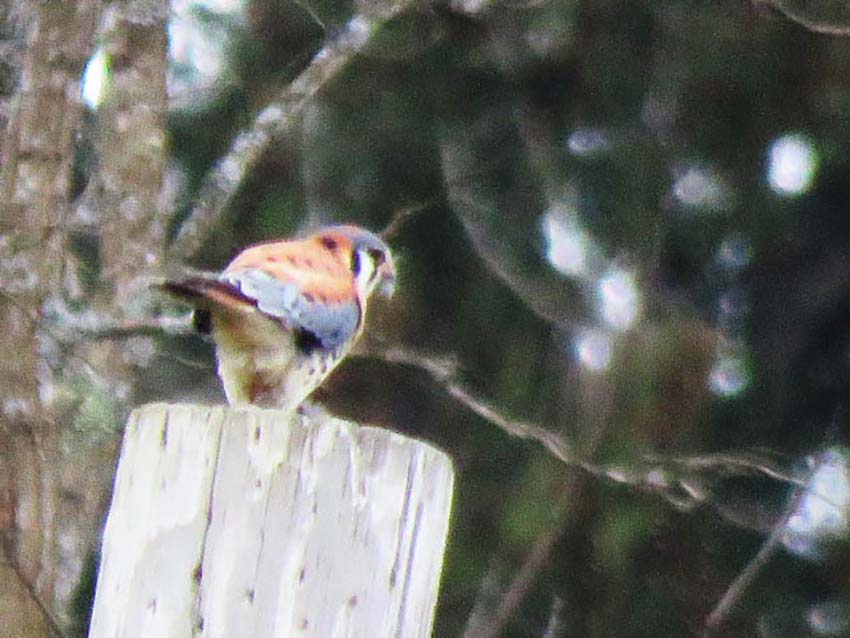
We’ve been pleased to see American Kestrels in their regular winter haunts around the state. We’ve seen them in Clark County and Raymond, WA, the Samish and Skagit flats, Whidbey Island and the Snoqualmie Valley, where this bird was eating a vole in the town of Carnation. We always think of this as a Falcon, but now apparently all the DNA burning tells the scientists that it’s actually more closely related to the Parakeets. It not only is gorgeous, it has a lyrical flight style and elegant flight profile.
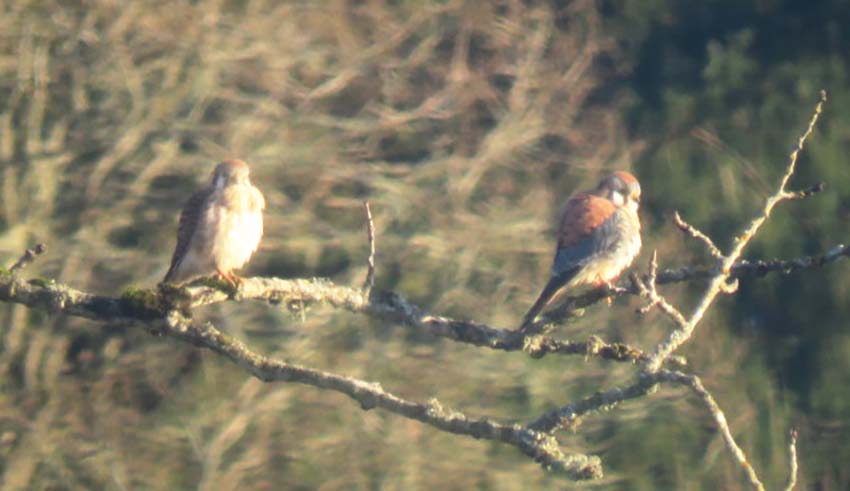
Here is a pair of Kestrels at Ridgefield.
More soon
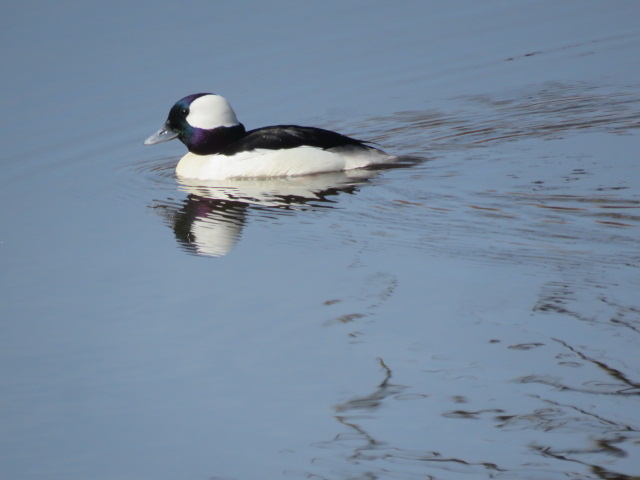
This snappy-looking male Bufflehead was simming at the pond in front of the headquarters building at Billy Frank.
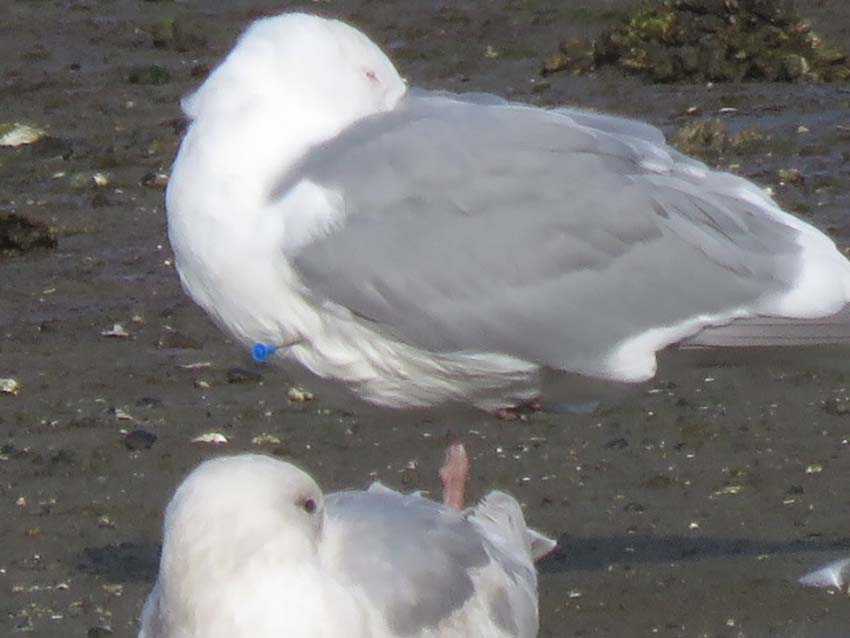
Humans are a weedy species. I’m sure one was responsible for this dart in the chest of this adult Glaucous-winged Gull. The bird was at KGY Point in Olympia on March 17, 2023. Neither Delia nor I had ever seen anything like it, it sure looks sinister, and more surprisingly neither had Gary Wiles who is a professional in the field, having worked for WDFW for years in the Endangered Species Division.

Sorry, the comment form is closed at this time.